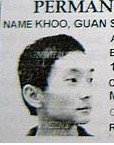Requiem for a Dream (2000)
This is an unusually sad film. I wonder if Mr. Aronofsky has given us a confessional of his severe outlook on life in the form of a downward spiraling narrative about broken dreamers; the fact that the characters are or became drug addicts seemed incidental. Still, despite being shown the horrific effects of drugs on individuals, the film seems to lack an edge that could only be achieved with an even grittier style.
The structure of this requiem resembles his earlier breakthrough film "Pi" where again the story starts at a low point for the lead characters & things  go further downhill until the catharsis of a climax. "Requiem" is "Pi," with Freud, particularly between Jared Leto's character & his mother played by the bold & incomparable Ellen Burstyn. I liked that sequence where Harry (Jared Leto) visits his mother & they have tense dialogue exchanges at the dining table; the crescendo of the dialogue interaction (from giddy surprise visit to high tension) and the contrasting close-ups between Leto & Burstyn were memorable. This was a very good scene and one of the few parts of the film that seemed realistic to me.
go further downhill until the catharsis of a climax. "Requiem" is "Pi," with Freud, particularly between Jared Leto's character & his mother played by the bold & incomparable Ellen Burstyn. I liked that sequence where Harry (Jared Leto) visits his mother & they have tense dialogue exchanges at the dining table; the crescendo of the dialogue interaction (from giddy surprise visit to high tension) and the contrasting close-ups between Leto & Burstyn were memorable. This was a very good scene and one of the few parts of the film that seemed realistic to me.
Speaking of realistic, I think many students will be eager to apply this term incorrectly to describe this film's general presentation. There's too much editing for this film to be realistic. Sometimes, editing is replaced with a split screen, which I liked very much because it successfully conveyed a mood: the love scene between Leto & Connelly's characters towards the beginning that used split-screens created palpable sensuality (it's immediacy is something a novel cannot duplicate). Another split-screen involving the mother & her intimidating refrigerator was an interesting substitute to the shot/reverse shot that seems to follow the 180° Rule.
I guess I liked the first half of the film better than the second half. Despite the nastiness of bodily & moral decay depicted in the end of the third act, I still managed to hang on & finish the film; I think Aronofsky had a vision of this "service for the dead" & he pulled it off. If I were to watch it again, it would be to immerse myself in the rhythm of its editing. The editing, like "City of God" is this film's prominent feature. Warning: This is NOT a good idea for date movie.




